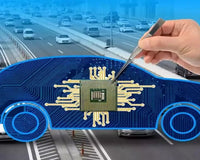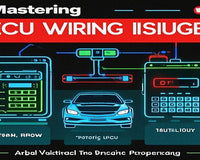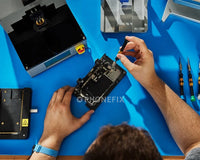Few things are more unsettling than glancing down at your car’s dashboard and realizing the speedometer isn’t moving. A non-functional speedometer isn’t just an inconvenience; it can be a safety hazard, making it hard to gauge your speed and follow traffic laws. If you’re dealing with this issue, don’t panic. Let’s break down the common causes, how to diagnose the problem.
Speedometer issues can stem from a range of mechanical or electrical problems, depending on whether your car has a traditional cable-driven system or a modern electronic one. Here are the most likely culprits:
1. Faulty Speed Sensor.
Most modern vehicles use an electronic speed sensor, typically located near the transmission or wheels. This sensor measures how fast your wheels are turning and sends that data to the car’s ECU computer, which then relays it to the speedometer. If the sensor fails—due to damage, corrosion, or wear—the speedometer won’t receive accurate information, causing it to stop working. You can use a UT109 multimeter to test the sensor’s resistance. If the reading is outside the normal range, the sensor likely needs replacement.
2. Broken Speedometer Cable.
Older cars often rely on a mechanical cable connected to the transmission. As the transmission spins, the cable rotates, turning a magnet inside the speedometer, which moves the needle. Over time, this cable can fray, snap, or become disconnected, stopping the needle in its tracks. If you suspect a broken cable, you can disconnect it from the transmission and manually spin it—if the speedometer needle moves, the cable is probably okay; if not, it may be broken.
3. Dashboard or Gauge Cluster Problems.
Sometimes the issue isn’t with the speed-sensing components but with the speedometer itself. The gauge cluster (the panel housing the speedometer, fuel gauge, and other dials) can develop electrical faults. Loose wiring, a blown fuse, or a malfunctioning circuit board can prevent the speedometer from lighting up or responding. Use an V519 OBD-II scanner to check for trouble codes related to the speed sensor or instrument cluster. Codes like P0500 (Vehicle Speed Sensor Malfunction) can point directly to a speed sensor problem.
4. Malfunctioning Engine Control Module (ECM).
Engine Control Module (ECM) or Powertrain Control Module (PCM) plays a role in processing speed data and transmitting it to the speedometer. A malfunctioning ECM or PCM can lead to speedometer issues. Fixing or replacing the ECM is best left to professionals, as it requires specialized car programmer. 
A non-working speedometer is a problem that shouldn’t be ignored. Whether it’s a simple sensor replacement or a more complex cluster repair, addressing it promptly helps you avoid tickets, accidents, and further damage to your car. If you’re not comfortable with DIY repairs, or if the issue is complex, it’s essential to get professional help from a mechanic or automotive specialist to make sure your car’s speedometer is working properly and keeps you safe while driving.
Why Is My Car’s Speedometer Acting Up? Troubleshooting Tips Inside










